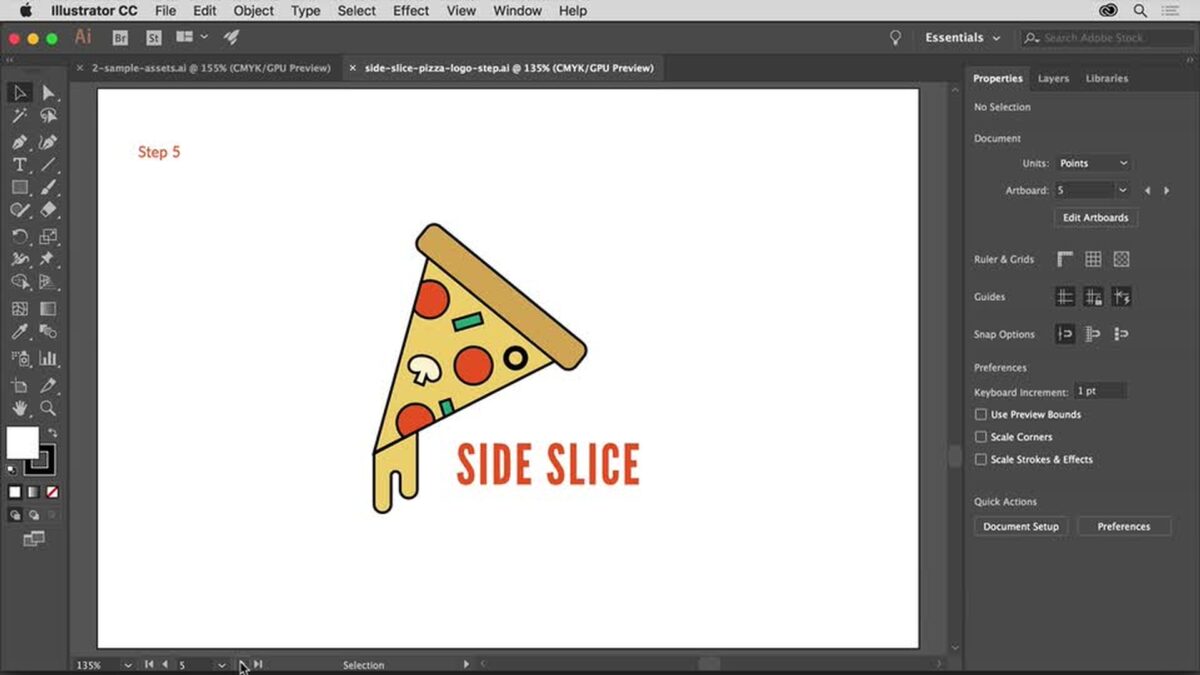Introduction: Business cards serve as powerful tools for networking, branding, and establishing professional identity. In today’s digital age, a well-designed business card can make a lasting impression and leave a memorable mark on potential clients, partners, and colleagues. Adobe Illustrator stands as the go-to software for designing business cards, offering a myriad of tools and features for creating customized and visually striking designs. In this comprehensive guide, we will explore everything you need to know about designing business cards in Adobe Illustrator, from conceptualization to printing, empowering you to create business cards that reflect your brand identity and make a lasting impression.
Chapter 1: Understanding Business Card Design Before diving into Adobe Illustrator, it’s essential to understand the principles of business card design. Explore the fundamentals of business card design, including the importance of clarity, simplicity, and consistency in conveying essential information effectively. Learn about different types of business cards, such as standard, square, and die-cut cards, and how they impact design choices and printing considerations. Gain insights into the psychology of color, typography, and layout in business card design and how they influence perception and brand recognition. Understanding the basics of business card design lays a solid foundation for creating impactful designs in Adobe Illustrator.
Chapter 2: Planning Your Business Card Design Planning your business card design involves defining your brand identity, researching competitors, and conceptualizing design ideas. Learn techniques for defining your brand’s identity, voice, and visual style, and how they inform your business card design decisions. Explore methods for conducting market research, analyzing competitor business cards, and identifying trends and patterns in your industry. Discover how to sketch and brainstorm design ideas on paper, exploring different layouts, typography treatments, and visual elements. By planning your business card design effectively, you can ensure that your final design aligns with your brand identity and resonates with your target audience.
Chapter 3: Setting Up Your Workspace in Adobe Illustrator Setting up your workspace in Adobe Illustrator involves configuring preferences, creating artboards, and organizing panels and tools for efficient workflow. Learn techniques for customizing Illustrator’s interface, including adjusting color themes, panel layouts, and keyboard shortcuts to suit your preferences. Explore approaches for setting up artboards for different business card sizes, orientations, and printing specifications. Discover how to organize layers, groups, and objects in your Illustrator document to keep your workspace tidy and organized. By setting up your workspace effectively, you can streamline your business card design process and focus on bringing your creative vision to life.
Chapter 4: Designing Your Business Card Designing your business card in Adobe Illustrator involves translating your ideas and concepts into digital designs using vector graphics tools and techniques. Learn techniques for designing business cards in Adobe Illustrator, including methods for creating shapes, lines, and curves with the Pen tool, placing and formatting text with the Type tool, and incorporating images and logos into your design. Explore approaches for experimenting with color, typography, and layout to create visually appealing and cohesive designs that reflect your brand identity. Discover how to use Illustrator’s alignment tools, grids, and guides to ensure precision and consistency in your business card design. By mastering the tools and techniques of Adobe Illustrator, you can bring your business card design to life with clarity and impact.
Chapter 5: Incorporating Brand Elements Incorporating brand elements into your business card design reinforces your brand identity and helps differentiate your business from competitors. Learn techniques for incorporating brand elements into your business card design in Adobe Illustrator, including methods for using brand colors, fonts, and imagery consistently across all design elements. Explore approaches for incorporating logos, icons, and other visual elements that represent your brand’s identity and values. Discover how to create visual hierarchy and emphasis using size, color, and placement to highlight important information and guide the viewer’s attention. By incorporating brand elements effectively, you can create business cards that resonate with your target audience and leave a memorable impression.
Chapter 6: Adding Finishing Touches Adding finishing touches to your business card design involves refining details, optimizing for print, and preparing for production. Learn techniques for adding finishing touches to your business card design in Adobe Illustrator, including methods for fine-tuning typography, adjusting colors, and balancing visual elements for harmony and balance. Explore approaches for creating bleed and trim marks, setting up print-ready files, and exporting your design in the appropriate file format for printing. Discover how to collaborate with printers and production vendors to ensure that your business cards are produced to the highest quality standards. By adding finishing touches to your business card design, you can create professional-looking cards that make a positive impression on your clients and contacts.
Chapter 7: Printing and Production Considerations Printing and production considerations play a crucial role in ensuring that your business cards are produced accurately and to the highest quality standards. Learn techniques for preparing your business card design for printing in Adobe Illustrator, including methods for setting up bleeds, trim marks, and color profiles for accurate reproduction. Explore approaches for choosing the right paper stock, finish, and printing method that align with your brand identity and budget. Discover how to work with printers and production vendors to obtain quotes, proofs, and samples to ensure that your business cards meet your expectations. By understanding printing and production considerations, you can ensure that your business cards are produced efficiently and effectively, ready to make a lasting impression on your clients and contacts.
Chapter 8: Tips and Tricks for Business Card Design Mastery To enhance your proficiency and creativity in business card design, explore tips and tricks from experienced designers and industry professionals. Learn techniques for optimizing workflow, organization, and efficiency when working in Adobe Illustrator, including methods for creating reusable templates, libraries, and assets to speed up your design process. Discover creative tips and tricks for typography, color theory, and layout that can elevate the impact and effectiveness of your business card designs. Explore workflow shortcuts and hidden features in Adobe Illustrator that can streamline your business card design process and enhance your productivity. By incorporating tips and tricks from seasoned designers, you can elevate your mastery of business card design and create memorable and impactful cards that leave a lasting impression on your clients and contacts.
Chapter 9: Real-World Examples and Case Studies To illustrate the practical applications of business card design in Adobe Illustrator, explore real-world examples and case studies of successful business card designs created by professional designers and agencies. Learn how business card design principles and techniques are applied in different industries and contexts, from corporate branding and identity design to personal branding and networking. Discover the workflows and strategies employed by designers to create business cards that resonate with audiences and leave a positive impression. Explore how Adobe Illustrator’s features and capabilities are leveraged to bring complex and innovative business card concepts to life with precision and creativity. By studying real-world examples and case studies, you can gain insights and inspiration for your own business card design projects and achieve success in the competitive field of branding and identity design.
Chapter 10: Future Trends and Developments As technology and design trends evolve, the future of business card design in Adobe Illustrator holds exciting possibilities for innovation and creativity. Explore future trends and developments in business card design, including advancements in digital printing, interactive technology, and sustainable materials that may shape the future of business card production and distribution. Learn about upcoming features and updates in Adobe Illustrator that may enhance the business card design process, such as improved typography tools, advanced color management, and integration with emerging technologies. Discover how designers are adapting to changing consumer behaviors and preferences, such as the rise of digital networking and contactless interactions, in business card design. By staying informed about future trends and developments, you can anticipate changes and innovations in business card design and position yourself at the forefront of the industry.
Conclusion: Designing a business card is a creative and strategic endeavor that requires careful planning, attention to detail, and creative vision. By following the guidelines outlined in this comprehensive guide and dedicating yourself to continuous learning and experimentation, you can master the art of business card design in Adobe Illustrator and create cards that reflect your brand identity and leave a lasting impression on your clients and contacts. Whether you’re designing a business card for a startup, a corporate brand, or a personal project, Adobe Illustrator provides the tools and resources you need to bring your creative vision to life with precision and impact. With its intuitive interface, powerful features, and endless creative possibilities, Adobe Illustrator stands as an indispensable tool for designers looking to achieve excellence in business card design.


